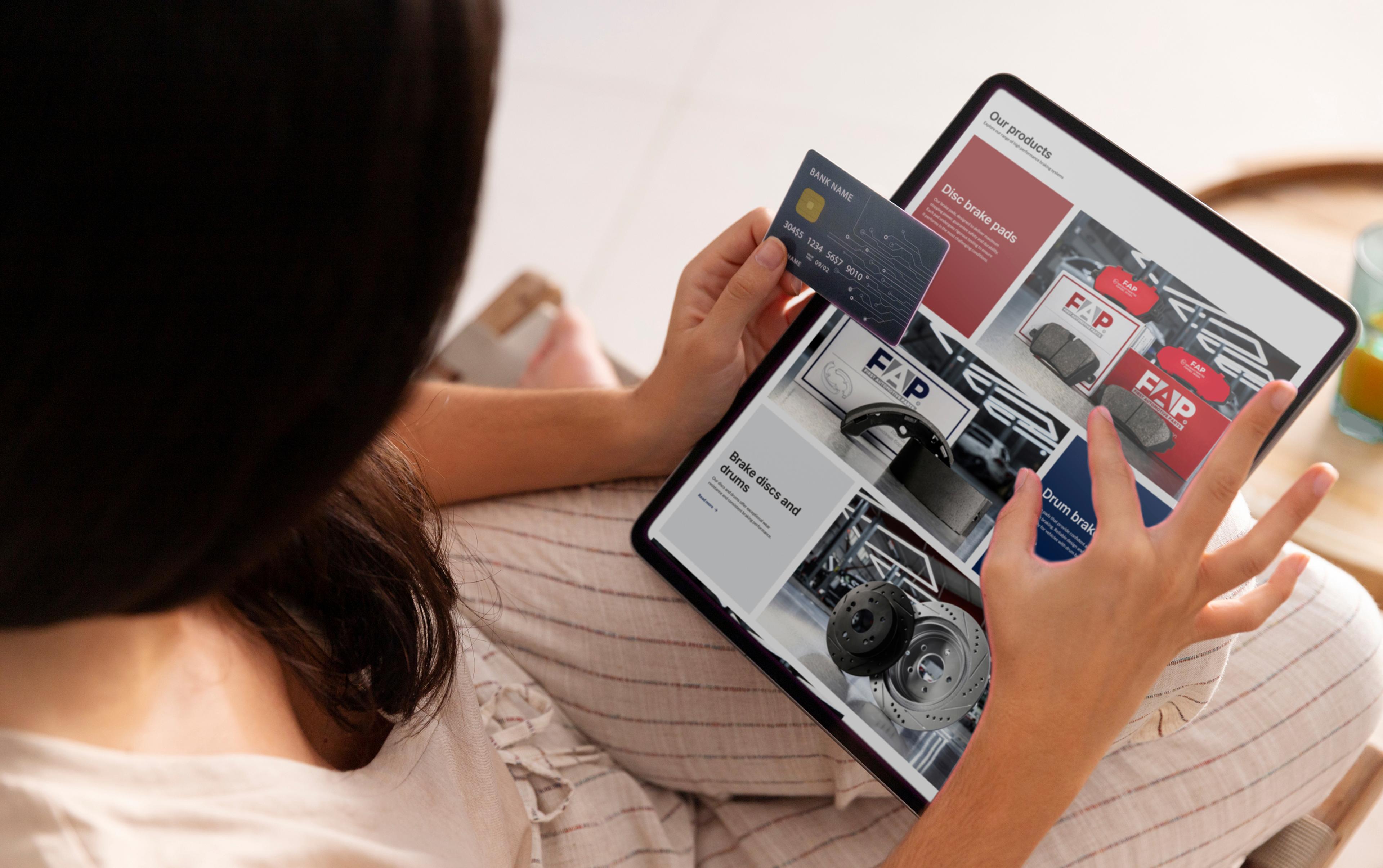Why your website is crucial
The request to optimize your website sounds banal at first glance, but the reality is often different. Every second of delay, every confusing menu or inadequately adapted layout can lead to potential customers leaving your site in frustration. In this article, you will learn how to use specific indicators to detect customer losses and stop them in the long term with targeted measures such as responsive web design, website analysis, usability optimization and SEO strategies.
Recognizing the causes of customer loss
To avoid losing customers, you must first identify the most common reasons. The most important warning signs are poor website performance, a lack of responsive design and insufficient findability through website SEO.
1. slow loading times and performance problems
Website performance is a decisive factor for user satisfaction. A delay of just a few seconds can decide whether a visitor stays or bounces. Studies show that the majority of users leave a page if it does not load quickly enough. Visitors expect an immediate response, especially on mobile devices.
Important load time metrics include the time until the first server response, the moment when the first content appears in the browser and when the main content is fully visible. These metrics help to identify bottlenecks and make targeted improvements.
For example, optimize images, reduce unnecessary scripts and use efficient caching. Tools such as Google PageSpeed Insights help to uncover technical weaknesses. A fast website not only ensures satisfied visitors, but also improves your visibility in search engines - a key lever for optimizing your website.
2. inadequate responsive web design
More and more people are using mobile devices such as smartphones or tablets to visit websites. This makes it all the more important that the site adapts flexibly to different screen sizes. If there is a lack of responsive design, the user experience suffers considerably. Visitors often encounter problems such as poorly legible text, tiny buttons or menu elements that are not fully visible. Overlapping images and confusing layouts are also typical signs that a website has not been optimized for mobile use. The result: frustration among users and a significantly higher bounce rate.
3. poor findability due to inadequate SEO
A beautiful website alone is of little use if it cannot be found on Google. Only when your content is visible can it reach and convince visitors. This requires targeted and well thought-out search engine optimization, or SEO for short, which ensures that your site appears in the search results and is easier to find in the long term.
On-page optimization
On-page optimization is an important part of search engine optimization and includes all measures that are implemented directly on the website itself in order to be found better in the search results. The aim is to make it easier for both search engines and users to understand the content and access it in a targeted manner. This includes, for example, a clear headline structure so that the content is well organized and clearly laid out.
The meta title and meta description, i.e. the text that is displayed in Google results, also play a major role. The Internet address of a page - i.e. the URL - should also be structured in a meaningful and comprehensible way. Images are described with so-called alt texts so that search engines can categorize them better. The targeted use of suitable search terms, so-called keywords, is also part of on-page optimization. It is just as important that the subpages are linked to each other in a meaningful way so that users can find their way around easily. Last but not least, the quality of the content is also important: It should be understandable, up-to-date and useful for the target group. All these factors contribute to the website appearing better in the search results - and being really helpful for visitors.
SEO
Technical SEO is just as important. This involves, for example, the loading speed, ensuring that Google can easily search your site and that a structured overview - a so-called XML sitemap - is available. All of this helps search engines to better understand and classify your site.
Structure
Finally, the quality of the content is also crucial. The texts on your website should be well written, sensibly structured and useful for your target group. It should use terms that people actually search for - so-called keywords. It is even better if the content answers the questions that users are really asking and is clearly and logically structured. This is achieved, for example, through a well thought-out headline structure.
All these measures together ensure that your website not only exists, but is also found - by exactly the people you want to reach.
Website analysis to find the cause
In order to take targeted action, you need a well-founded website analysis. It provides the basis for all further optimizations.
Tools and metrics at a glance
To understand how well your website is working and where there may be problems, it is worth using special analysis tools. With Google Analytics, for example, you can see where your visitors come from, how long they stay on the site and at what point they leave. The Google Search Console shows you which search terms users use to reach your site, how high the click-through rate is and whether there are any technical problems with indexing.
The Lighthouse tool automatically generates reports on the loading speed, accessibility and search engine friendliness of your website. And tools such as Hotjar or Crazy Egg give you visual insights into the behavior of your users - for example via heatmaps, scrollmaps or even recorded sessions. This allows you to recognize where visitors drop out or cannot find their way around. This data helps you to make targeted improvements and improve your website step by step.
User feedback and qualitative analysis
Numbers from analytics tools show you how many people visit your website or where they bounce - but they say nothing about how users feel about it. To understand this, direct feedback from real people is crucial. Even small hints on the website, such as "Was this page helpful?" or short comment fields, can provide valuable feedback. Conversations with customers - on the phone or via video call, for example - also help to uncover typical problems or misunderstandings. Targeted observations of someone using your website while you are watching are particularly helpful. This allows you to immediately recognize where users get stuck or what confuses them. Such qualitative insights show you what pure numbers often don't reveal: why visitors bounce, what frustrates them - and what they really need.
Measures for usability optimization
Intuitive navigation and information architecture
For larger websites in particular, it is important that visitors can find their way around easily. Clear navigation helps them to find their way around quickly - and this has a positive effect on the user experience. So-called breadcrumbs, i.e. a kind of click path at the top of the page, offer an easy way to see where you are currently located. The main menu should also remain clear - ideally it should contain no more than seven central points so that users are not overwhelmed. In addition, a clearly visible and reliable search function plays an important role, especially if there are many products or page contents.
Accessibility and readability
An accessible website ensures that everyone can use it - even those with visual, hearing or mobility impairments. This not only increases reach, but also makes the site more pleasant for everyone. For example, it is important that texts are easy to read: The difference between the font and the background should be clear enough for people with impaired vision to be able to see everything - a contrast ratio of at least 4.5:1 is a good guideline for this. It also helps if visitors can adjust the font size themselves without breaking the layout. And images should always have a description, so-called alternative texts, so that blind users with a screen reader can also understand what can be seen on them
Choosing a website agency
Sometimes professional support is the most effective solution. When choosing a website agency, you should consider the following criteria.
Experienced web design and development teams
If you want to hire an agency for your website, you should definitely look for a convincing portfolio and meaningful references. This will show you which projects the agency already has experience with - and whether their style and quality match your expectations. It is particularly important that the agency is familiar with responsive design, i.e. websites that work well on all devices. They should also have knowledge in areas such as website performance and SEO, because a beautiful website alone is not enough - it also has to load quickly, be easy to find and function technically flawlessly. All of this shows that the agency not only thinks creatively, but also strategically and technically.
Project management and collaboration
Good collaboration with an agency depends on clear processes and open communication. Make sure that the agency uses transparent processes - for example, according to methods such as Scrum or Kanban, where tasks are clearly structured and comprehensibly organized. Regular milestones ensure that you always know the status of the project, what will happen next and whether everything is on schedule. It is particularly helpful if there is a fixed contact person who is available to answer questions, can make decisions quickly and supports the project throughout. This saves time, prevents misunderstandings and ensures that everything runs smoothly.
Conclusion
A successful website needs more than just a good design - it needs to run technically flawlessly, be user-friendly and be found on Google. If you recognize early on where visitors are dropping off, you can take targeted countermeasures with the right tools. Better usability, accessibility, fast loading times and structured content ensure that users stay and convert. If you lack the know-how, an experienced agency can help. A website audit is the ideal starting point for identifying weaknesses and creating the basis for a strong online presence.



